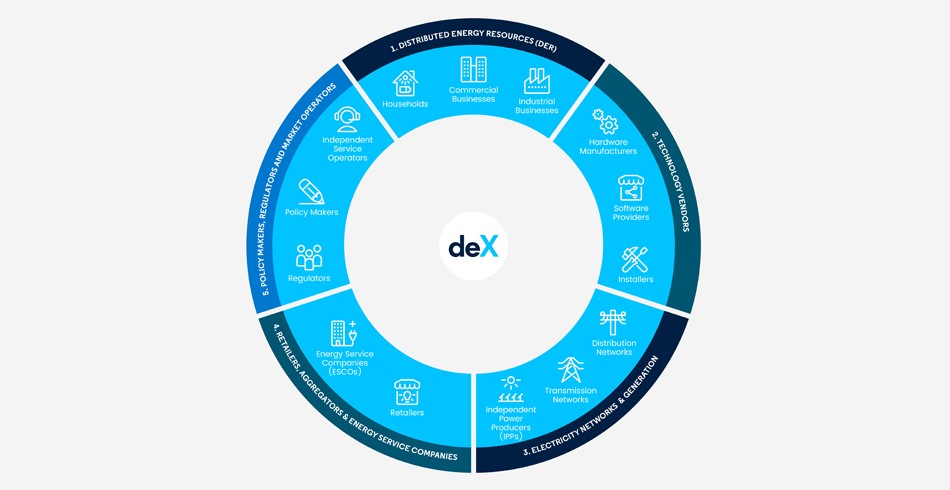GreenSync has today announced that the Decentralised Energy Exchange (deX) has commenced the rollout of a new platform that connects millions of distributed energy resources (DER) and virtual power plants (VPPs) to existing markets such as the wholesale market, as well as enabling new markets to provide grid services.
The company says the announcement is a monumental advancement towards households and businesses getting more value out of their distributed energy assets – solar PV, storage and electric vehicles – by being rewarded for adding to overall grid system reliability.
As part of the exchange, deX Connect allows Distributed Energy Resources (DER) access to open markets via a single (fleet-wide) integration completed by their technology provider using the deX API. This integration connects millions of DER – including virtual power plants (VPPs), inverters, battery storage, monitoring solutions and other new ‘behind the meter’ products – both physically and digitally to the Distributed Energy Exchange, enabling new tradable energy services and expanding the reach of existing VPPs already in the market today.
Today, deX will represent more than 70 per cent of Australia’s solar and storage inverter market with eight new partners including Wattwatchers, Enphase Energy, Sungrow, SwitchDin, Blue Pillar, Fronius, Goodwe and Solar Analytics joining deX Connect. They join Tesla who was the first technology vendor to be integrated with deX Connect.
GreenSync CEO and founder Phil Blythe said, “deX is open for business and this marks the dawn of a new era as Australia moves toward a responsive, dynamic and bi-directional grid that can predict and adjust to rapidly changing conditions to balance energy supply and demand.”
Related article: GreenSync unveils Decentralised Energy Exchange
GreenSync also unveiled deX Vision, a portal into the exchange which provides networks and system operators with visibility across the location, performance and operational status of DER, allowing them to understand the net impact of DER in the network. The first integration partners for deX Vision are Schneider Electric and Indra, providing a bridge to distribution network management systems.
Australian households coupled with technology vendors on deX Connect will have the option to trade their energy on deX starting with customers connected to the National Electricity Market (NEM) from Q1/2019 and customers with the Wholesale Electricity Market, Western Australia (WEM) from Q2/2019. Following the availability of deX in Australia, it will progressively be launched in the United Kingdom (Q3/2019), Japan (Q4/2019) and the United States (early 2020), with our partners.
Residential, commercial and industrial customers can participate in deX and technology vendors can join deX Connect for free by simply registering online. Energy retailers and aggregators can participate in deX for an administrative fee. Distribution networks and market operators are able to access deX via a subscription license.
Related article: Modelling the grid for distributed energy
For more than a decade, the energy industry has grappled with how to ensure energy security in a system powered by clean energy, which is mostly made up of generation sources that are intermittent and variable. While the intelligence of DER is a critical factor, it’s vital that the existing system can adapt to better manage generation from different assets and to exercise greater coordination of traffic on the grid.
“There has been a lot of negative media coverage about the impending crisis posed by the proliferation of solar and other DER on the grid, but instead of launching into discussions about curtailment and the rollback of subsidies, we should be looking for ways to better manage its continued growth,” Dr Blythe said. “deX ensures consumer benefit by growing the grid’s renewable hosting capacity whilst managing reliability, which is better for everyone.”
“By helping to manage DER and providing the digital infrastructure that will facilitate trading of DER in an open marketplace, deX creates the conditions required to enable a future powered in the vast majority by renewables.”
As a global leader in high penetration renewables, Australia’s transition to an orchestrated yet decentralised grid bears is a leading light for other parts of the world. deX brings forth a new paradigm that will have long reaching global benefit.
Keep an eye out for Energy Source and Distribution’s November/December issue where we profile Dr Phil Blythe.







